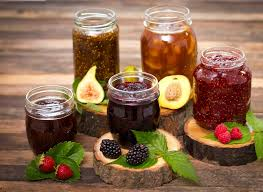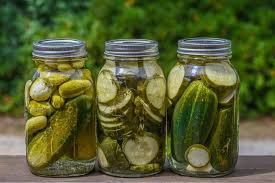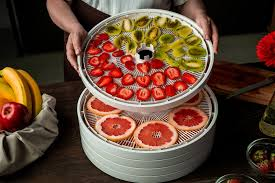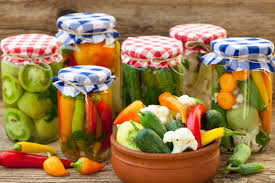Canning and drying are excellent methods to preserve the bounty of your garden, allowing you to store fruits and vegetables for months. These techniques provide nutritious, vitamin-rich preserves for when fresh produce is scarce during the off-season. Here’s how you can effectively preserve your harvest:
Jams & Jellies
Jams and jellies are made from fruits like raspberries, apples, and foraged varieties such as elderberries or brambles. The key to a successful set is pectin, which some fruits naturally contain in abundance. If your fruit lacks pectin, you can combine it with high-pectin fruits or add commercial pectin.
To make jam, start with high-quality, unblemished fruit, wash it, and cut it into uniform pieces. Simmer the fruit with water, add sugar, and boil until it reaches the setting point. You can use a jam thermometer or the cold saucer test: drop a bit of jam onto a chilled saucer, and if it wrinkles when pushed, it’s ready.
For jelly, use fruits that need straining to remove seeds. After cooking and straining the fruit through muslin or a jelly bag, add sugar and boil until it sets.

Both jams and jellies require sterilized jars, which should be kept warm while you prepare the mixture. After sealing the jars, process them in a boiling water bath for about 30 minutes to eliminate contaminants and ensure a proper seal. Once cooled, jars can be stored for up to a year, though reprocessing may be required if the seal fails.
Pickles & Chutneys
Pickling is versatile—you can pickle cucumbers, beets, onions, and peppers. To keep vegetables crisp, avoid slicing them too thinly. Some vegetables may need soaking in brine before pickling to maintain their texture. Add flavorings like dill, garlic, or mustard seeds to make your pickles unique.
For chutneys, use a mix of fruits and vegetables, such as green tomatoes or onions, to create a flavorful spread. Near the end of cooking, check the consistency by running a spoon through the mixture—if it holds its shape, it’s ready. Chutneys require acetic acid (like vinegar) to preserve them properly. Follow a tested recipe to ensure safe acid levels and avoid harmful bacteria. Process chutneys in a water bath or use a pressure canner for lower-acid foods. They typically mature best after several weeks to months, and unopened jars can last up to two years.

Drying Fruit
Drying (or dehydrating) is a simple way to preserve fruit long-term, changing its texture without sacrificing flavor. You can use a dehydrator, but your oven works just as well. Slice fruit thinly, arrange it on a tray, and dry it at the lowest oven temperature until it’s shrunk and fully dried. For long-term storage, sterilize the fruit by freezing it for a couple of days before sealing it in airtight containers.
For fruits like apples or pears, soak them in a mildly acidic solution (citric acid or lemon juice) to prevent discoloration. Dried fruit should be consumed within a few weeks, but sterilization helps extend shelf life.

Another fun option is fruit leathers, made by blending ripe fruit into a puree, spreading it on a non-stick sheet, and drying it at around 135°F (57°C) for 4-8 hours. Fruit leathers made from damsons or blackberries are especially delicious and can be spiced or sweetened to your taste.
Conclusion
Canning and drying offer versatile methods to preserve your garden’s produce. Whether you’re making jams, chutneys, or drying fruit for snacks, each method ensures that you’ll have nutritious, home-preserved food year-round. Proper sterilization, careful processing, and the right ingredients will help you create delicious, long-lasting preserves.
